|
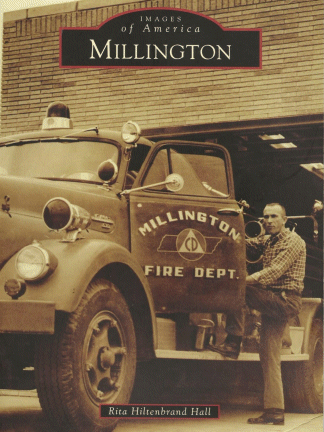
From the pages of
Millington by Rita
Hiltenbrand Hall
Images Of America Series, 2012
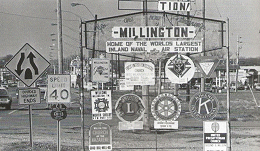 The City of Millington was incorporated in 1903, but
like every other town, it has a history much older than
its charter would seem to indicate. The first settlers
of this portion of north Shelby County arrived within
the first two decades of the 19th century. Col. Clement
McDaniel has a well-established homestead and an active
trade going with the local Native Americans when
surveyor John Ralston, quite to his surprise, stumbled
upon the McDaniels while plotting land claims for North
Carolina’s Revolutionary War veterans sometime before
1820. In 1822, John Ralston married the colonel’s
daughter Lucy and settled near the McDaniel homestead.
It is rumored that the community names Lucy is named for
this young bride and the Ralstons came to be great
landholders in the area.
The City of Millington was incorporated in 1903, but
like every other town, it has a history much older than
its charter would seem to indicate. The first settlers
of this portion of north Shelby County arrived within
the first two decades of the 19th century. Col. Clement
McDaniel has a well-established homestead and an active
trade going with the local Native Americans when
surveyor John Ralston, quite to his surprise, stumbled
upon the McDaniels while plotting land claims for North
Carolina’s Revolutionary War veterans sometime before
1820. In 1822, John Ralston married the colonel’s
daughter Lucy and settled near the McDaniel homestead.
It is rumored that the community names Lucy is named for
this young bride and the Ralstons came to be great
landholders in the area.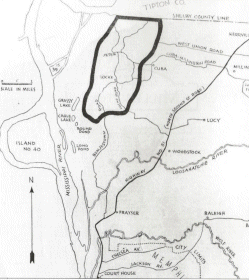
Nearby, a string-type settlement called Big
Creek was forming along the banks of the
tributary of the Loosahatchie River for
which it was named. Other area communities
were named for their prominent citizens,
such as Kerrville, named for Rev. Andrew
Kerr, and Jeter, named for a pioneer family.
Later, communities were given names whose
origins, despite their often romantic
intrigue, are now forgotten or obscured,
such as Glencoe, Millwood, Roaring Falls,
Woodstock, Shakerag, Cuba, Locke, West
union, and Independence. Over time, each of
these, for whatever reason, was overshadowed
by the growing Millington community.
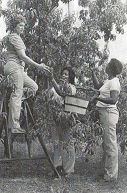 Many of the earliest settlers of this region
were wealthy planners who took advantage of
the rich soil to grow cotton, the South’s
staple crop, and to make fortunes in the
hardwood industry. Clearing trees to create
more arable land resulted in widespread
erosion and unpredictable, but frequent,
flooding as Big Creek climbed out of its bed
to ruin crops and destroy homes. Over time,
small villages such as Glencoe and Millwood
were established at seemingly safe distances
from the flooding. By the 1870s, however, it
was clear that even these villages were not
out of danger. When the Chesapeake & Ohio
Railroad (C&O) sought to lay track from
Memphis northward, George Millington and his
wife, the former Mrs. Wade Bolton,
subdivided a portion of their extensive
landholdings on high ground for the
construction of a depot and town. The depot
was named Millington, and when the villagers
grew tired of fighting rising waters and
moved closer to the new train station, the
town of Millington was born.
Many of the earliest settlers of this region
were wealthy planners who took advantage of
the rich soil to grow cotton, the South’s
staple crop, and to make fortunes in the
hardwood industry. Clearing trees to create
more arable land resulted in widespread
erosion and unpredictable, but frequent,
flooding as Big Creek climbed out of its bed
to ruin crops and destroy homes. Over time,
small villages such as Glencoe and Millwood
were established at seemingly safe distances
from the flooding. By the 1870s, however, it
was clear that even these villages were not
out of danger. When the Chesapeake & Ohio
Railroad (C&O) sought to lay track from
Memphis northward, George Millington and his
wife, the former Mrs. Wade Bolton,
subdivided a portion of their extensive
landholdings on high ground for the
construction of a depot and town. The depot
was named Millington, and when the villagers
grew tired of fighting rising waters and
moved closer to the new train station, the
town of Millington was born.
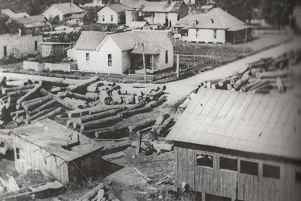 The ability to transport lumber by train
rather than over the waterways made
Millington businessmen wealthy even faster.
Once lands were cleared, cotton became the
crop of choice and the cotton industry
employed untold numbers from the antebellum
era through the 20th century. The railroad
also brought new people to the town, and new
businesses arose to accommodate their needs.
By 1910, seven years after incorporation,
Millington boasted a hotel, bank, sawmill,
restaurant, livery stable, light plant,
telegraph office, real estate agency, and
newspaper. The town had nine dry goods and
general merchandise stores, drugstore, a
The ability to transport lumber by train
rather than over the waterways made
Millington businessmen wealthy even faster.
Once lands were cleared, cotton became the
crop of choice and the cotton industry
employed untold numbers from the antebellum
era through the 20th century. The railroad
also brought new people to the town, and new
businesses arose to accommodate their needs.
By 1910, seven years after incorporation,
Millington boasted a hotel, bank, sawmill,
restaurant, livery stable, light plant,
telegraph office, real estate agency, and
newspaper. The town had nine dry goods and
general merchandise stores, drugstore, a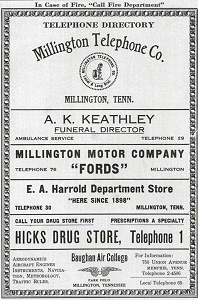 jeweler, an electrician, three blacksmiths,
six physicians, two undertakers (one
female), four grocers (including two African
Americans), and three barbers, one of whom
was African American. In addition, Eugene
Woods was a lumber manufacturer who employed
dozens of men and created work for the
town’s three loggers and nine carpenters.
Other residents found work with the
railroad, in the slaughterhouse, as
bookkeepers, as domestic or farm laborers,
or in local schools. Entrepreneurial souls
struck out on their own; Millington salesmen
included peddlers of clothing, sewing
machines, and harnesses.
jeweler, an electrician, three blacksmiths,
six physicians, two undertakers (one
female), four grocers (including two African
Americans), and three barbers, one of whom
was African American. In addition, Eugene
Woods was a lumber manufacturer who employed
dozens of men and created work for the
town’s three loggers and nine carpenters.
Other residents found work with the
railroad, in the slaughterhouse, as
bookkeepers, as domestic or farm laborers,
or in local schools. Entrepreneurial souls
struck out on their own; Millington salesmen
included peddlers of clothing, sewing
machines, and harnesses.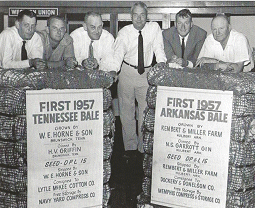
In less than a decade, though, hostilities
in Europe garnered much attention in the
United States. To the east of Millington,
one of West Tennessee’s first pilot training
facilities, complete with hospital, was
developed at Park Field for the U.S. Army
Air Forces. Several landowners extended
five-year leases to the government providing
the land for Park Field, after which time
the government purchased the land to make
the airfield a permanent installation. One
benefit of Park Field was that it placed
Millington, and nearby Memphis as well, on
the aerial mail route for the first time.
Once the war ended, however, Park Field fell
fallow until after the Depression, when it
was temporarily revitalized as a transient
camp for unemployed men under Roosevelt’s
Resettlement Administration. It was slated
to be subdivided among small farmers who
lost their properties during the Depression
when Word War II erupted, signaling major
changes for Millington’s future.
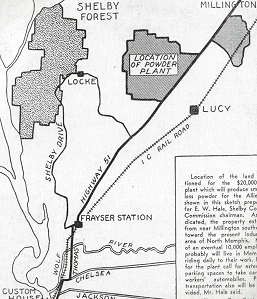 The military presence around Millington grew
as the E.I. Dupont de Nemours Company was
commissioned to build a munitions factory
west o Millington, near the community of
Cuba, to manufacture TNT and smokeless
gunpowder to support Allied efforts during
World War II. More than 5,000 acres were
purchased by the government for this
purpose, forever changing the physical
landscape. The “powder plant,” as it became
known, altered the economic landscape as
well. More than 14,000 men and women worked
in the plant
The military presence around Millington grew
as the E.I. Dupont de Nemours Company was
commissioned to build a munitions factory
west o Millington, near the community of
Cuba, to manufacture TNT and smokeless
gunpowder to support Allied efforts during
World War II. More than 5,000 acres were
purchased by the government for this
purpose, forever changing the physical
landscape. The “powder plant,” as it became
known, altered the economic landscape as
well. More than 14,000 men and women worked
in the plant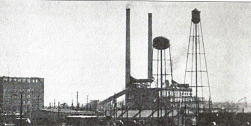 during World War II, forcing Shelby County
to make drastic changes to the
infrastructure. Roads were laid or improved
to accommodate the region. Trailer parks
sprung up in and around Millington to combat
population explosion s worker migrated from
hundreds of miles around in search of
employment. Cotton lay unpicked in the
fields below huge billboards for Memphis
businesses, such Bry’s Department Store and
Pantaze Drug Store, which boasted that they
would cash powder plant paychecks for free.
After the war, the powder plant was almost
immediately closed an disassembled, leaving
a scar on the landscape that remains
unhealed.
during World War II, forcing Shelby County
to make drastic changes to the
infrastructure. Roads were laid or improved
to accommodate the region. Trailer parks
sprung up in and around Millington to combat
population explosion s worker migrated from
hundreds of miles around in search of
employment. Cotton lay unpicked in the
fields below huge billboards for Memphis
businesses, such Bry’s Department Store and
Pantaze Drug Store, which boasted that they
would cash powder plant paychecks for free.
After the war, the powder plant was almost
immediately closed an disassembled, leaving
a scar on the landscape that remains
unhealed.
By 1942, the federal government
elected to expand Park Field for use as a
Naval Reserve Air Base commissioned to train
aviation cadets. Within a few short months,
the reserve base was renamed the naval air
station.
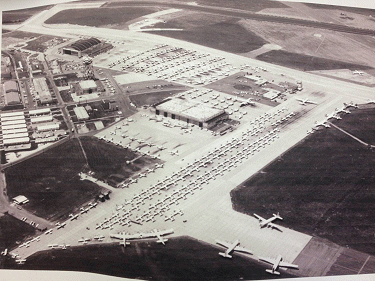 Just
east of Millington city limits stood the
world’s largest inland Navy base, and for
more than half a century, sailors and
marines took instruction within its gates.
The constant influx of sojourners was a
great boom to the Millington economy, which,
like the rest of the country, continued to
recover from depression and war. While the
base provided housing and recreation to
enlisted men and officers alike, troops, no
doubt eager for a few moments that felt like
normal life, spent their paychecks at
Millington’s businesses and participated in
Millington’s community events. Just
east of Millington city limits stood the
world’s largest inland Navy base, and for
more than half a century, sailors and
marines took instruction within its gates.
The constant influx of sojourners was a
great boom to the Millington economy, which,
like the rest of the country, continued to
recover from depression and war. While the
base provided housing and recreation to
enlisted men and officers alike, troops, no
doubt eager for a few moments that felt like
normal life, spent their paychecks at
Millington’s businesses and participated in
Millington’s community events.
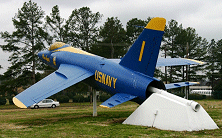 For
many, the stay in Millington was brief –
only a few weeks or months. Others stayed up
to three years. With the added population of
the Navy base, Millington’s census numbers
tripled by 1963, but more than half of those
enumerated had no roots, historical
knowledge, or significant attachment to the
town they so briefly called home. In 1994,
the first phase of the Navy Base Realignment
and Closure (BRAC) Committee study resulted
in a drastic change of assignment for the
Millington base. After more than half a
century, the naval air training facility
became the Bureau of Personnel (BUPERS),
causing a drastic decline in For
many, the stay in Millington was brief –
only a few weeks or months. Others stayed up
to three years. With the added population of
the Navy base, Millington’s census numbers
tripled by 1963, but more than half of those
enumerated had no roots, historical
knowledge, or significant attachment to the
town they so briefly called home. In 1994,
the first phase of the Navy Base Realignment
and Closure (BRAC) Committee study resulted
in a drastic change of assignment for the
Millington base. After more than half a
century, the naval air training facility
became the Bureau of Personnel (BUPERS),
causing a drastic decline in
 Millington’s
total population even as the area per capita
income increased with the influx of officers
and reduction in enlisted personnel. Millington’s
total population even as the area per capita
income increased with the influx of officers
and reduction in enlisted personnel.
New Deal legislation and programs in the
1930s contributed to the development of the
Shelby County Forest Recreational
Demonstration Area, west of where the powder
plant would be built. Participants in the
Works Progress Administration (WPA) programs
and local civic groups collaborated to carve
out roads and woodland trails, plant 2.5
million trees, and build cabins and communal
buildings in the new park. Three hundred WPA
workers lived at Park Field while assigned
to the Shelby Forest project. Residents of
Millington and its outlying communities were
proud to have this beautiful park close to
home and have enjoyed countless hours of
hiking, swimming, fishing, camping, Frisbee
golf, horseback riding, canoeing, and other
activities there. Control of Shelby Forest,
as it is locally known, was given to the
State of Tennessee in 1944. It was renamed
Meeman-Shelby Forest State Park in 1967 in
honor of journalist and conservationist
Edward J. Meeman.
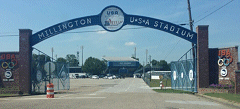 Over the course of the 20th century,
Millington welcomed progress. B.L. Howard
purchased the fledging Millington Telephone
Company in 1928, and his grandchildren
recently inherited control over this utility
as well as the Millington Cable Company and
the Old
Over the course of the 20th century,
Millington welcomed progress. B.L. Howard
purchased the fledging Millington Telephone
Company in 1928, and his grandchildren
recently inherited control over this utility
as well as the Millington Cable Company and
the Old Timers Restaurant from their father, W.S.
“Babe” Howard. The Strand Theatre, opened in
1939, offered second-run movies in its life
and now, in its second incarnation, welcomes
crowds for live gospel and country music
shows. By 1950, the Millington Post Office
began door-to-door delivery of the daily
mail. During the 1960s and 1970s, favorite
pastimes included sipping fountain drinks at
the Rexall or watching movies at the Twin
Drive-In. The 1980s ushered in the era of
Olympic baseball training in Millington at
USA Stadium where, since 1990, another
favorite event has been the International
Goat Days Festival. Annual events such as
Timers Restaurant from their father, W.S.
“Babe” Howard. The Strand Theatre, opened in
1939, offered second-run movies in its life
and now, in its second incarnation, welcomes
crowds for live gospel and country music
shows. By 1950, the Millington Post Office
began door-to-door delivery of the daily
mail. During the 1960s and 1970s, favorite
pastimes included sipping fountain drinks at
the Rexall or watching movies at the Twin
Drive-In. The 1980s ushered in the era of
Olympic baseball training in Millington at
USA Stadium where, since 1990, another
favorite event has been the International
Goat Days Festival. Annual events such as
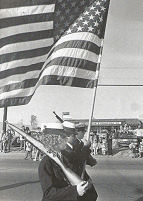 the
Flag City Freedom Celebration, the Mid-South
Air Show featuring the Navy’s Blue Angels,
the American Legion Fair draw large crowds.
Although the closure of Memphis Motorsports
Park in 2008 took NASCAR out of the
Millington area, the 2011 opening of the
Memphis International Raceway in its place
offers enthusiasts the thrills of drag
racing. the
Flag City Freedom Celebration, the Mid-South
Air Show featuring the Navy’s Blue Angels,
the American Legion Fair draw large crowds.
Although the closure of Memphis Motorsports
Park in 2008 took NASCAR out of the
Millington area, the 2011 opening of the
Memphis International Raceway in its place
offers enthusiasts the thrills of drag
racing.
Today, Millington continues to thrive and
prosper. The Millington, Sigler, Jones,
Sneed, Armour, Howard, and the other early
families continue to branch out of the
town’s deep roots. Former military personnel
have returned and raised families in
Millington. Many have grown up in and around
Millington have gone on to fame and fortune
and given back graciously to their hometown
community. Pop star and actor Justin
Timberlake grew up near Shelby Forest, where
he recently opened the world-class Mirimichi
Golf Course.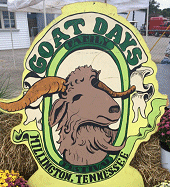 Singer-songwriters Bobby Whitlock, Myla
Smith, and members of the band Kings of Leon
grew up in and around Millington. The
Reverend Al Green, a gospel singer and
pastor at Memphis’ Full Gospel Tabernacle
Church, also calls Millington home. Football
players Tyrone Calico (Tennessee Titans),
Greg Hardy (Carolina Panthers), Ahmaad
Galloway (Denver Broncos) and Marlon Barnes
(Colorado Buffalos) started their careers at
Millington High School Trojans, and the
former University of Memphis Tigers
defensive back Chris Michaels has returned
to his alma mater as head coach of the
Millington Trojans. During USA Stadium’s
heyday, over 200 major league baseball
players trained for Olympic competition over
the course of a decade. Millington, as its
founding families knew more than a century
ago, their descendants continue to
appreciate, and newcomers are beginning to
realize, is a great place to raise a family.
These photographs reflect the way Millington
once was and how it has evolved into a fine
place, as welcome signs at the city limits
invite, to “Come Home” to.
Singer-songwriters Bobby Whitlock, Myla
Smith, and members of the band Kings of Leon
grew up in and around Millington. The
Reverend Al Green, a gospel singer and
pastor at Memphis’ Full Gospel Tabernacle
Church, also calls Millington home. Football
players Tyrone Calico (Tennessee Titans),
Greg Hardy (Carolina Panthers), Ahmaad
Galloway (Denver Broncos) and Marlon Barnes
(Colorado Buffalos) started their careers at
Millington High School Trojans, and the
former University of Memphis Tigers
defensive back Chris Michaels has returned
to his alma mater as head coach of the
Millington Trojans. During USA Stadium’s
heyday, over 200 major league baseball
players trained for Olympic competition over
the course of a decade. Millington, as its
founding families knew more than a century
ago, their descendants continue to
appreciate, and newcomers are beginning to
realize, is a great place to raise a family.
These photographs reflect the way Millington
once was and how it has evolved into a fine
place, as welcome signs at the city limits
invite, to “Come Home” to.
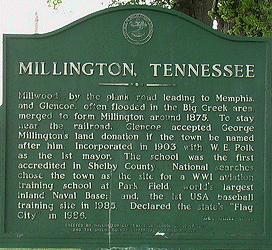
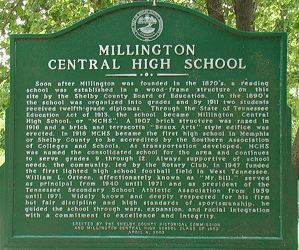 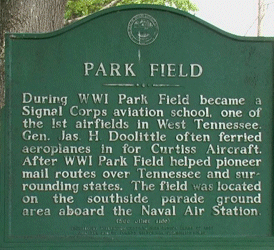
For current
information about Millington, please visit
the official website:
www.millingtontn.gov
and /or on Facebook:
https://www.facebook.com/places/Things-to-do-in-Millington-Tennessee/103684046336310
Millington by Rita
Hiltenbrand Hall Images Of America Series |